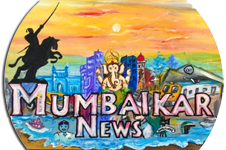Mumbai’s Graphics Beyond Crafting Cultural Signages for Ayodhya’s Ram Temple Complex

Mumbai, 17th January 2024: Graphics Beyond, a Mumbai-based firm, emerged victorious in a competition organized by the Uttar Pradesh (UP) government and Ayodhya Development Authority in 2021 for the design of signages in Ayodhya. Now, the firm has earned another accolade, being chosen by the Shri Ram Janmabhoomi Teerth Kshetra Trust to craft signages for the Ram temple complex.
Baarish Vasant Date, the founder of Graphics Beyond in 2002, shared that the Ayodhya Development Authority recognized the merit in their work, leading to direct contact from the Trust. The agency was brought on board in the first quarter of 2023 and is set to unveil its designs soon.
Working within the 22-acre core area of the 60-acre temple complex, which includes the Ram temple, perkota, smaller temples, and the Kuber Tila, Date’s team is focusing on creating a cohesive and coherent signage system. At the entrance to the 22-acre area, a public facilitation center will be established, where visitors will deposit mobiles and electronic gadgets. From there, they will rely entirely on the signages to navigate the 2-3 hour journey through the area.
“The primary function of wayfinding of Mandir campus is to make people aware, comfortable and make entire campus appear accessible; since most are the first time visitors and new to this entire environment. Any individual should be able to navigate easily and independently, to find their way comfortably around the entire Teerth Kshetra”, Date explained.
Special pictograms have been developed, connecting with the local diaspora and highlighting local geography and culture, all while incorporating Indian culture and visual aesthetics. The signages are designed to be vandal-proof, considering Ayodhya’s monkey population, and are written in English and Hindi, using the Mukta font known for bilingual compatibility.
The signs, shaped like a ‘namaste,’ taper on the top and bottom, symbolizing both a greeting and reverence to the deity. Each sign is supported on two saffron pipes of 9-inch diameter, inspired by the Upanishads and Vedas. The twin pipes serve as punctuations, reminiscent of manuscripts and vedas, or the image of Lord Ganesha on wedding cards.
An intriguing feature of the boards is the Gavaksh, an auspicious motif atop all boards, borrowed from the temple design to maintain consistency in the signages.





